Updated: December 22, 2023
The history of Humankind is natively coupled to gambling history. Since the dawn of time, there are pieces of evidence constituting recreational play, pastime tournaments, and gambling with betting whenever crowds of people cluster together.





 According to some historians, the hunger for pleasure and distraction is in our DNA. Others, artsy-lovers biographers, think that the primitive festivals, religious ceremonies, occurrences with music, dancing, and similar playful events sourced competition, which inevitably led to playing contests with adding danger.
According to some historians, the hunger for pleasure and distraction is in our DNA. Others, artsy-lovers biographers, think that the primitive festivals, religious ceremonies, occurrences with music, dancing, and similar playful events sourced competition, which inevitably led to playing contests with adding danger.
With this article, we will give you a compressed version of the gambling history. So, don’t expect a detailed story with a beginning, middle, and end. It will be only a bundle of paramount moments, indicating the landmarks on the maps and journals of today’s general gambling understanding with facts and special achievements.
 According to the Greek authors Sophocles and Herodotus, the dice is a Greek creation invented in the glory days of an ancient civilization. However, with the above details and artifacts from other world’s regions, the reported Greek ‘invention’ was disproved. Nevertheless, it does stand the mentioned in these writings, how in Greece, people used to celebrate after war victories with festive games and gambling (with dice) around 500 BC. It is widely proclaimed that Romans and Ancient Greeks loved the idea of competing for honour and playing a game wagering their personal belongings. Regardless, all types of play related to gambling, which included dice or cards, were prohibited in the city of Rome and its surroundings. Being exposed or captured while gambling led to a severe penalty.
According to the Greek authors Sophocles and Herodotus, the dice is a Greek creation invented in the glory days of an ancient civilization. However, with the above details and artifacts from other world’s regions, the reported Greek ‘invention’ was disproved. Nevertheless, it does stand the mentioned in these writings, how in Greece, people used to celebrate after war victories with festive games and gambling (with dice) around 500 BC. It is widely proclaimed that Romans and Ancient Greeks loved the idea of competing for honour and playing a game wagering their personal belongings. Regardless, all types of play related to gambling, which included dice or cards, were prohibited in the city of Rome and its surroundings. Being exposed or captured while gambling led to a severe penalty. In many aspects, Ancient Egyptian life still doesn’t stop to surprise us. With every new evidence found about the people of the Nile Valley, with every new artifact discovered, we are astonished by their intricate methods in agriculture, evolved approaches in medicine, refined technology in building engineering, and zealous consideration with the deceased. It is believed that Egyptian cosmopolitans created, invented, produced, and formulated exceptional content in all essential matters (including gambling).
In many aspects, Ancient Egyptian life still doesn’t stop to surprise us. With every new evidence found about the people of the Nile Valley, with every new artifact discovered, we are astonished by their intricate methods in agriculture, evolved approaches in medicine, refined technology in building engineering, and zealous consideration with the deceased. It is believed that Egyptian cosmopolitans created, invented, produced, and formulated exceptional content in all essential matters (including gambling).
There is substantial evidence of gambling in Ancient Egypt due to archaeological excavations and preserved artifacts, affirming the true contribution of this great northeast African civilization.
The first uncovered prototypes of dice, dating from the time of the pharaohs, were made from the tusks of elephants.
Also, table games similar to checkers and backgammon and shreds of evidence of more physical yet strategic games were located, all trove findings from ancient tombs.
These games extracted the very best of the ancient Egyptians. Their affluent civilization and extensive history – knowledge, military, religion, economic, technological, and cultural achievements. Their symbols depict the gods and pharaohs of Egypt, and their background scenery – pyramids, catacombs, and tomb chambers. As featured characters, they contain some typical Egyptian worshiped animals: Falcon, Serpent, Scarab, Mighty Bull, Baboon, Lioness, Ibis, and Mongoose.
Betting is one of humanity’s relic activities that has been traced back to the ancient worlds of Greece, China, and Egypt. Each of these civilizations, broadly researched by archaeologists through various inherited artifacts, revealed their contributions to the global gaming concepts. The presence/discovery of umpteen gambling objects indicates how outspread gambling activities were in ancient times.
But here is how it all started:
The first conserved ancient board games are played on racing plank games (from around 3000 B.C., according to the archeologists’ report), where opponents move pieces on a track made of holes or squares. The first player who gets all the pieces off the board wins.
Also, around the same time (ca. 3000–2000 B.C.), dates a diverse array of 2, 4, and 6-sided pieces were used in some ancient board games to define the direction and position of some archaic gaming chips. Soon after that, knucklebones, typically of sheep’s or goat’s ankle bone, with 4 individual fronts, started to be tossed, showing a different outcome.
Along with them, the cubic dice began to participate (according to some archaeological materials) in the board gaming action.
In Egypt, board games displaying scenes and players were sketched on tomb walls and papyri fragments. There are pieces of evidence of social games and recreational contests being inserted into practices and religious rituals, which suggests a very deep connection between the holy and the sinful.
Via military crusades, travel, and commerce links, Egypt and the Near East spread and interchange several games (as noted in the historical reports). There are 4 games: Senet, Mehen, 20 Squares, Hounds and Jackals, typically related to the heritage of those areas, often associated with players on opposing fronts of the same board, and spectators (in most cases) encouraging from close around. Regarding spreading -Senet and Mehen were confined to regions very close to Egypt, unlike 20 Squares and Hounds and Jackals – which were extendedly used in many further territories.
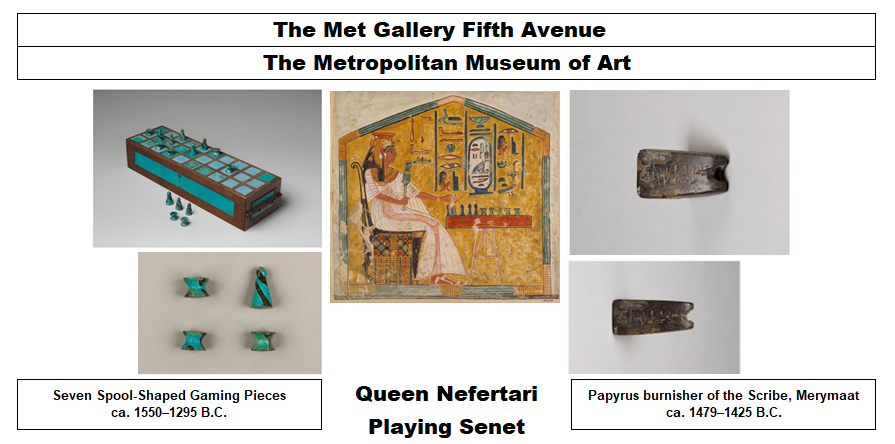
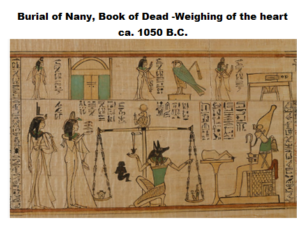 This is the most noteworthy Egyptian antique game (from the first dynasty). It is a board game that required 30 squares (3×10), 5 of which were specifically adorned. The players moved their distinguished pawns in both directions after throwing two-sided sticks or ‘knucklebones’ (imagine an ancient game as a mix between Domino and Ludo for 2 players).
This is the most noteworthy Egyptian antique game (from the first dynasty). It is a board game that required 30 squares (3×10), 5 of which were specifically adorned. The players moved their distinguished pawns in both directions after throwing two-sided sticks or ‘knucklebones’ (imagine an ancient game as a mix between Domino and Ludo for 2 players).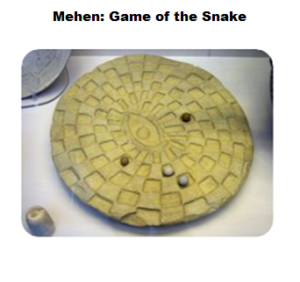 Another famous Egyptian board game is Mehen. In the religious manuscripts – Pyramid Texts and captions indicate the ancient people’s confidence that the afterlife was possible by progressively proceeding through the Mehen’s circle (representing a spiral snake, separated into squares).
Another famous Egyptian board game is Mehen. In the religious manuscripts – Pyramid Texts and captions indicate the ancient people’s confidence that the afterlife was possible by progressively proceeding through the Mehen’s circle (representing a spiral snake, separated into squares). This strategy board game is the oldest complete (intact + preserved rules guide) board game ever found by archeological excavations. The discoverers stumbled upon the 20 Squares plank inside the Royal catacomb at the ancient Sumerian metropolis of Ur in Mesopotamia.
This strategy board game is the oldest complete (intact + preserved rules guide) board game ever found by archeological excavations. The discoverers stumbled upon the 20 Squares plank inside the Royal catacomb at the ancient Sumerian metropolis of Ur in Mesopotamia. The gaming plank of this famous around 2000 BC board game has 2 sets of 29 holes. Gaming tools were dog and jackal-headed sticks. 10 small pins per player were supposed to race by fitting into the holes until one of the competitors arrives at the ultimate point N: 30.
The gaming plank of this famous around 2000 BC board game has 2 sets of 29 holes. Gaming tools were dog and jackal-headed sticks. 10 small pins per player were supposed to race by fitting into the holes until one of the competitors arrives at the ultimate point N: 30.All 4 antique board games have similar characteristics being race games for 2 competitors and using pawns or sticks. Plus, they all required stones or other pieces (acting like dice) used to determine who should start first and where to move.
So, the concept that contemporary societies introduced gambling due to technological advances is most probably incorrect. Its existence in everyday ancient life reveals that even back then, gambling was a universal activity.
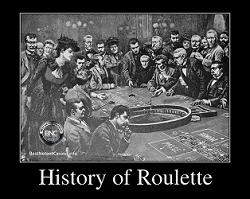 The history of Roulette is not a straight-line development process. Shreds of legitimate information, bits of gossip and legends, some exaggerations, and fake segments – are all entangled in the chronicle of Roulette.
The history of Roulette is not a straight-line development process. Shreds of legitimate information, bits of gossip and legends, some exaggerations, and fake segments – are all entangled in the chronicle of Roulette.
We should account that there are several pieces of evidence dating approximately 1000 years, exhibiting Roulette elements, gathered from different places on the globe, and many countries/people are professing themselves as the actual creators/authors of the great game. Many ancient civilizations have known or created elements that can be linked to Roulette. For example:
So, it is difficult to tell apart all the facts of the fictional versions of the initial discovery of Roulette. However, we will try to shed light on this article, interpreting some of the most widespread/common stories.
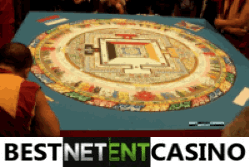 There are some Chinese records from around 1000 years ago about a game fashionable among the Tibetan monks that work on the principle of the Roulette game. The playing field is a circular shape divided into 666 square sections, and on the brim of the circle were located 37 different animal figures. Unfortunately, except for the fact that the game was beloved by the religious clerics and approved by the Chinese authorities, not much of the instructions or game stage setting had survived.
There are some Chinese records from around 1000 years ago about a game fashionable among the Tibetan monks that work on the principle of the Roulette game. The playing field is a circular shape divided into 666 square sections, and on the brim of the circle were located 37 different animal figures. Unfortunately, except for the fact that the game was beloved by the religious clerics and approved by the Chinese authorities, not much of the instructions or game stage setting had survived.
The story of this popular game of chance got mixed and flew to another era and a different Chinese province. Allegedly, the notion of the impressive monk’s game was taken over by the priests of the Dominican Order (Roman-Catholic Order with missions in China in the 16th -18th century), where after undergoing some changes, it started to resemble the modern Roulette.
Cardinal Mazarin, a person reckless and resourceful at the same, known for his major diplomatic and military victories, along with being the pioneer of contemporary international law and patron of the arts in Paris, was also famous for his extreme gambling habits and setting up the first Public/Royal Lottery. Not for nothing was he called ‘the father of the French Roulette.’
Besides being heavily addicted and in debt for the first part of his life, the famous Cardinal was passionate to entice all his friends and acquaintances to the excitement of the hazard, reckoning that the Roulette game could be not only a great recreational and social event but from there could also spring an enormous profit for the states’ treasury.
That’s why he legitimized the operations at the French gambling houses, and even passed some laws, setting the rules and conditions, which will ultimately secure the growth and popularity of the gambling establishments in France at the end of the 18th century. Laying the foundations and further development of the gambling branch as ‘industry’ the successor of Cardinal Richelieu.
The favourite game of the Cardinal and his assistants was the game HAWK (originally from Italy), which is considered by some historians the initial version of the present-day Roulette. The concept of the game was this: a gaming table is a circle with 40-holes.
To each opening was designated a number (1 to 37, tinted in 2 colours, plus 3 holes assigned as ‘0’ holes), and at the center of the ring-shaped playing field, there was an axis of rotation of a wheel with spokes and orbits, to be followed, between which a small ball was in motion.
During the spinning, through the spokes, the ball had 3 chances of hitting (3 areas).In case the ball was touching a (1) section with an even number, the player wins, and in case the ball is following the orbit, but striking directly or slightly brushing a (2) sector with an odd number, the prize went to the gambling establishment.
That same – house win – happened when the ball hit any of the ‘0’ openings (3). All this shows that great profits began to pile up for the gambling shops and, respectively, for Louis the XIV‘s treasury by overcharging the customers/gamblers.
 In the 17th century, the French physicist, mathematician, and inventor Blaise Pascal conducted experiments with a perpetual moving wheel (and a ball running with it) – a device operating unceasingly with no external source of charge. The laws of physics obviously screamed – ‘perpetual motion – impossible.’ Still, being a founder and explorer, Mr. Pascal was going against all traditional opinions and aiming at defying the odds of nature. Alas, his experiment failed, but the process became known as the genesis of Roulette.
In the 17th century, the French physicist, mathematician, and inventor Blaise Pascal conducted experiments with a perpetual moving wheel (and a ball running with it) – a device operating unceasingly with no external source of charge. The laws of physics obviously screamed – ‘perpetual motion – impossible.’ Still, being a founder and explorer, Mr. Pascal was going against all traditional opinions and aiming at defying the odds of nature. Alas, his experiment failed, but the process became known as the genesis of Roulette.
Other stories involving the great erudite were less popular. Still, they include reports for popularizing a game of chance named ‘Wheel of Pascal, ‘or mathematically solving a lotto scheme, via the probability of winning with 36 tickets.
No matter what the true description of events was, what is important is that Pascal is undeniably related to the history of Roulette and that around the 17th -18th century, this entertaining game manifested itself as a glorious affair not only at the salons of elite secular aristocracy but becoming the most important game at every casino and gambling establishment in Paris.
Further development of Roulette in the French 18th-19th century society (during the Napoleonic era) contributed to the famous Perrin brothers’ gambling houses. The multiple casinos of the brothers from Lyon in the capital city and several other localities promoted the Roulette for the first time with the opportunity to bet on odd and even numbers, together with placing stakes on the dozen columns and on zero.
 Another publicly spread tale leading to the additional enforcement of the Roulette is the input of Paris’ criminal police. France of the 18th century was overcrowded with card swindlers, which pushed the chief of the French police Gabriel de Sartin to a desperate measure via one unconventional idea in the struggle with the escalating trickery methods. He started to endorse the entertaining game of chance – Roulette as an alternative to card games.
Another publicly spread tale leading to the additional enforcement of the Roulette is the input of Paris’ criminal police. France of the 18th century was overcrowded with card swindlers, which pushed the chief of the French police Gabriel de Sartin to a desperate measure via one unconventional idea in the struggle with the escalating trickery methods. He started to endorse the entertaining game of chance – Roulette as an alternative to card games.
To minimize the risk of cheating and game manipulation, he proposed substituting all card games with Roulette, where servants of the gambling house should impose the rules, restricting the human factor. His suggestion worked well, making the Roulette super popular and seriously mending the country’s crime numbers. It seems that the French police fought the corrupt gambling using the ‘lesser evil’ compared to the card scams, creating very favourable conditions for the Roulette game on the way.
Meanwhile, the game was widely admissible, highly respected, and desired at any Western European gambling establishment of the 19th century. However, different institutions offered different house-versions of Roulette: with 1 zero, 2 zeros, or no zero at all.
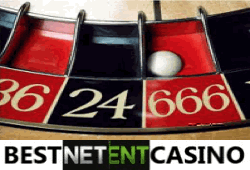 After initially gaining momentum in Europe and its colonies in the New World, Roulette undergoes yet another remodelling in the last part of the 19th century. The widespread game model was with 38 sectors – numbers from 1 to 36 and 2 extra sectors: 0 and 00, the objective of which is to institute the benefits of the gambling house.
After initially gaining momentum in Europe and its colonies in the New World, Roulette undergoes yet another remodelling in the last part of the 19th century. The widespread game model was with 38 sectors – numbers from 1 to 36 and 2 extra sectors: 0 and 00, the objective of which is to institute the benefits of the gambling house.
However, in 1843, the brothers Francois and Louis Blanc vehemently sought ways to get rid of the competition and decided to present to the players of Bad Homburg – a German spa town, their own Roulette wheel with only one sector 0. To everyone’s astonishment, this dramatically increased the chances of winning and logically affected Roulette’s model popularity.
The older Roulette version endured agony, making the establishments of the enterprising brothers so triumphant that rumours became spreading of Blanc brothers – making a deal with the devil, selling their souls for the secret of Roulette. Instead of hurting the brothers (or perhaps spread by them initially), these rumours worked as an extra advertisement for their gambling houses and for the Roulette popularity in general.
Thus, began a new phase in the history of Roulette when the advantage of the gambling institution has been reduced due to the single zero. However, besides the possible fabricated and authentic elements of the story, the sum of all the numbers on the Roulette wheel is 666, which symbolizes the devil’s favourite number in many cultures.
With the wave of emigration flooding the European colonies of the New World (mid-19th century), the game of Roulette moved overseas as well. Especially on the American continent, the popularity gained was of enormous size. First, the Roulette advanced to Mississippi, crossed the Wild West, and passed a triumphant march toward the Pacific Ocean. During California’s Gold Rush, the adoption and recognition of Roulette in the American world were at last finalized.
Most of the gold miners, becoming extremely rich in a few short months, sought entertainment rather than ways for investments. That’s how gambling turned to be their favourite leisure time activity, where they could spend the easily earned dollars. This boosted the number of freshly established casinos, where nothing could compare with the mesmerizing game of numbers and jumping on the wheel ball. Yes, the Roulette provided them with extended hours of pleasure while waiting for the small white ball to decide if they won or lost.
The Americans were attracted by the simplicity of the rules and the prospect of winning, relying only on personal luck (at first glance). But the American casino owners were greedier than their European counterparts. They quickly came up with their own variant of the Roulette – 28 numbers instead of 36 and 3 sectors for the banker: 0, 00, and American Eagle.
Despite growing revenues, the American casinos could not avoid the increasing number of outraged players because of the large house edge over the players in this Roulette model. So, gradually the Roulette in the United States returned to its version with 36 numbers and 00.
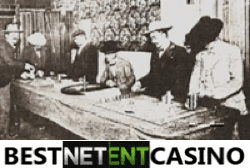 It is precisely due to the game’s simplicity and pure style why that Roulette invaded the whole world. There are multiple versions of the game, all immensely popular:
It is precisely due to the game’s simplicity and pure style why that Roulette invaded the whole world. There are multiple versions of the game, all immensely popular:
As a result of the technological progress already in the ’70s of the 20 century via electronic sensors, the possibility to control the movement of the Roulette wheel was to provide much-needed transparency and prevent wrongful actions by casino staff.
For many years Roulette was the most popular form of entertainment in land-based casinos, but in the second half of the 20 century, slot machines pushed their way to number one on the industrial scale. However, even today, nobody contests the refine and exalting atmosphere of the Roulette table: the velvet fabric on the table, a stack of chips, and the captivating revolving of the wheel of fortune.
The last bit in the history of Roulette’s evolution is the spread of Internet gambling to create the first online casinos. Nowadays, many gamblers – fans of online Roulette prefer to enjoy the game in their home environment than go to the actual gambling establishment. The online casinos of the 21st century offer Virtual (HD) Roulette, Online Life Roulette, and Omni-Channel Roulette.
The casinos’ software is constantly improving, and presently the complex mathematical algorithms underlying the random number generator (RNG) can guarantee in all respects that no outside factors can influence the drop of a number in a virtual Roulette.
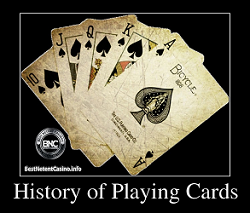 The excitement, arousal of feelings, and the thrill of getting positive satisfaction during all kinds of play are integrally printed in the human mind as the highest creatures on earth.
The excitement, arousal of feelings, and the thrill of getting positive satisfaction during all kinds of play are integrally printed in the human mind as the highest creatures on earth.
For thousands of years, humankind has been playing games for delight or for the payoff, where, in both, the outcome depends on chance. Some games are new; others substitute older ones but remain in their essence.
Despite being vastly undocumented, the cards and playing cards most certainly were available for fun and recreational activities, along with religious and prediction matters at the dawn of human history.
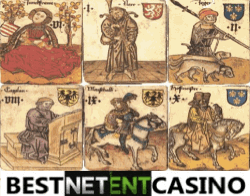 In Korea, as a part of magic rituals, serving the purpose of fortune-telling were used images that are commonly believed to be the prototype of modern playing cards. They were created from paper saturated by oil, with silk and called Htou-Tien or fighting arrows.
In Korea, as a part of magic rituals, serving the purpose of fortune-telling were used images that are commonly believed to be the prototype of modern playing cards. They were created from paper saturated by oil, with silk and called Htou-Tien or fighting arrows.
Later these cards spread into China as well but with a changed technique of production and appearance. These cards were used as a foundation for the design of the Chinese banknotes, distributed in the Celestial Empire (old name of China used from 15th century and later), and received the name ‘money.’ ‘Ensemble of 52 cards (precisely the number of weeks in a year) which had four variations (representing the natural yearly seasons).
The Chinese who lived under imperial rule were employing the cards as tools during arcane rituals for the same reasons – prophecy and foretelling the future.
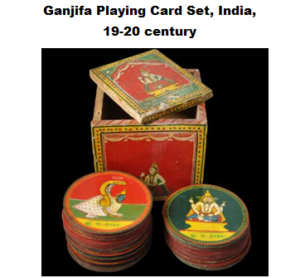 In India, roughly in the 16th century started surfacing games deck of 96 cards, consisting of 8×12 lines cards in each suit. 10 cards with the numbers from 1 to 10, and 2 with pictures (God Shiva’s visions usually), in 4 suits – corresponding to the aspects of social classes: cup, sword, sceptre, and a coin.
In India, roughly in the 16th century started surfacing games deck of 96 cards, consisting of 8×12 lines cards in each suit. 10 cards with the numbers from 1 to 10, and 2 with pictures (God Shiva’s visions usually), in 4 suits – corresponding to the aspects of social classes: cup, sword, sceptre, and a coin.
These Indian cards were detailed and handcrafted, which made them pricy and enormously rare. According to some historians, they become the prototype of the card suits. However, playing with the Indian cards resemble chess rather than the contemporary game with cards.
The most popular ancient Indian card game is certainly ‘Ganjifa.’ It is believed to be brought during the Moghul period from Persia. The name very applicably comes from the Persian word ‘Ganjifeh,’ which implies playing cards. The specialty of these cards is that they are commonly artsy (hand-painted), round and vary in the number of suits.
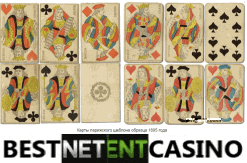 It is problematic to establish categorically how and when the cards (as we know them today) were first used in Europe. It became apparent that they originated from Asia, from either China, Persia, or India.
It is problematic to establish categorically how and when the cards (as we know them today) were first used in Europe. It became apparent that they originated from Asia, from either China, Persia, or India.
Another theory is that they have been brought to Europe by some Arabian vendors on their trading trips. Muslims certainly rejected this version for a long time since the Koran bans gambling (so they couldn’t have spread the games with cards and betting on their merchant travels).
This assertion was disclaimed after establishing that the Islam followers enjoyed playing cards and created their own deck and specific game rules (images of people were replaced by geometric forms and designs).
The first mention of playing cards in Europe refers to the end of the 14th century when some Europeans exercised the Arab game ‘Naib.’ Just at that time in Italy was invented the first European card game – Taroko, using tarot cards, which contrary to popular belief, were invented not only for occult but for gaming purposes as well.
 At the beginning of the 15th century, cards were an extravagance object, and playing cards were considered an occupation for Europe’s aristocracy only. Famous artists (the most prominent and uniquely skilled of all of them – the Italian masters) were commissioned to create distinctive decks of cards.
At the beginning of the 15th century, cards were an extravagance object, and playing cards were considered an occupation for Europe’s aristocracy only. Famous artists (the most prominent and uniquely skilled of all of them – the Italian masters) were commissioned to create distinctive decks of cards.
The history of playing cards starts to fully unfold with the early development of printing in the mid-15th century. The first full-accomplished deck of playing cards was issued in Germany around 1440 by the pioneer-creator Johannes Gutenberg. Soon after that, Woodcuts companies (for relief printing with carving technique) printed these cards, which is cheap to manufacture; they slowly outplaced (regarding widespread) the artwork of the Italian painters.
The 15th-century playing cards were additionally painted after the woodcuts preparation. The Flemish Hunting Deck (The Cloisters Playing Deck), exhibited at the Metropolitan Museum of Art (here on the picture below), is the oldest complete set of standard playing cards in Europe dating from the 15th century.
The modern type deck resembles the 16th-17th century’s basic types of playing decks, based on the suits they use: French, Latin, and Germanic. They vary in the number of cards, colours, and distinct pictures. National/traditional decks still exist and are used in some regions for customary games.
Nowadays, the French deck is undoubtedly the most prevalent playing card deck in the world. That is due to 2 factors: 1) the suits are easily the simplest in design, which makes them easy and cheap to print, and 2) this particular deck is the favourite of the most aggressive and dominant world powers/countries of the past few centuries: France, the UK, and the USA, i.e. completely assimilated without the competition of other types of decks.
That also counts for the countries with their own fixed national traits decks, such as Italy and Germany. The French deck contains 52 cards in 2 colours (red and black) and with 4 suits (Hearts, Diamonds, Clubs, and Spades). So, the French card deck, as you’ve guessed, is the one utilized in the world’s most popular games: bridge and poker.
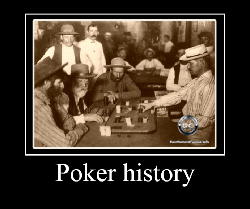 Historians believe that the fundamentals of this paramount casino table game were evident as long as a Millennium ago in the social life of people of several cultures on different continents. Please read our article further and familiarize yourself with the history of Poker.
Historians believe that the fundamentals of this paramount casino table game were evident as long as a Millennium ago in the social life of people of several cultures on different continents. Please read our article further and familiarize yourself with the history of Poker.
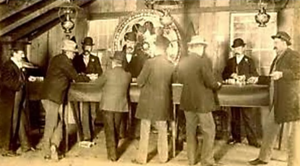 After the period of initial acceptance (the 1800s-1820s) in several frontier states in the South-West (Arizona, New Mexico, California, Colorado), followed by the prohibition regulations and bouncing the gamblers out of the region, the Poker scene shifted to the Mississippi River gambling steamboats. From Minneapolis, down to St Louis, Memphis, and finally to New Orleans.
After the period of initial acceptance (the 1800s-1820s) in several frontier states in the South-West (Arizona, New Mexico, California, Colorado), followed by the prohibition regulations and bouncing the gamblers out of the region, the Poker scene shifted to the Mississippi River gambling steamboats. From Minneapolis, down to St Louis, Memphis, and finally to New Orleans.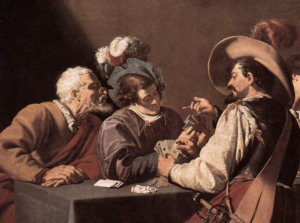 The game of poker nowadays is remarkably transformed. At the dawn of the 19th century, Poker was played by low-life scoundrels, being their side source of income. Today many players made it their primary income generator, participating as professionals at tournaments and other events.
The game of poker nowadays is remarkably transformed. At the dawn of the 19th century, Poker was played by low-life scoundrels, being their side source of income. Today many players made it their primary income generator, participating as professionals at tournaments and other events.
The regular Poker player is reinstated from the status of outlaw (on the Mississippi riverboat) to the celebrity status of the Poker star (since the WSP -World Series of Poker) in the 1970s. The technology advance and the online casino advent blasted off the Poker development even higher, as hands were no longer dealt by cunning double-dealers but by a software algorithm on a platform that connects myriad players worldwide.
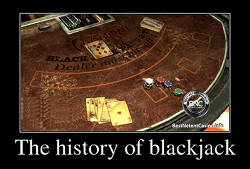 Every respectful current-day gambling establishment in Canada offers Blackjack (generally known as 21) in its table games section. It is undeniably as commercialized, as well-received, and admirable as the much older game of Poker.
Every respectful current-day gambling establishment in Canada offers Blackjack (generally known as 21) in its table games section. It is undeniably as commercialized, as well-received, and admirable as the much older game of Poker.
Moreover, exactly as controversial as all the other card games regarding the point of origin, in the history of Blackjack, there are mentioned different countries claiming the invention of the game.
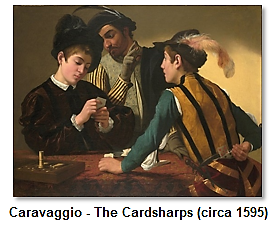 The first chronological note reporting on Blackjack dates from the early decades of the 17th century (1601-1611), deriving from Spain. The celebrated author Miguel de Cervantes – a gambler himself, depicts at that time the adventures of some low-level Seville’s sharpies, making the game of ‘VeintiUna’ (21) a livelihood.
The first chronological note reporting on Blackjack dates from the early decades of the 17th century (1601-1611), deriving from Spain. The celebrated author Miguel de Cervantes – a gambler himself, depicts at that time the adventures of some low-level Seville’s sharpies, making the game of ‘VeintiUna’ (21) a livelihood.
This qualifies the Spanish contribution to the history of Blackjack as an incipient declaration of the game’s existence.
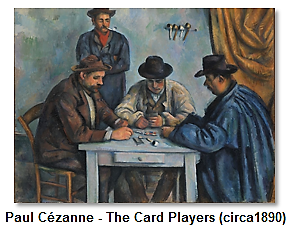 From the mid-18th and beginning of the 19th century, different west European capitals were reporting fashionable games with variable local names: Vingt-et-Un- in France, Einundzwanzig- in Germany, and Pontoon in Britain, all of which are popular descendants of Blackjack, with their own-traditional for the region spin-off of the general rules.
From the mid-18th and beginning of the 19th century, different west European capitals were reporting fashionable games with variable local names: Vingt-et-Un- in France, Einundzwanzig- in Germany, and Pontoon in Britain, all of which are popular descendants of Blackjack, with their own-traditional for the region spin-off of the general rules.
However, universally they were all: table, chance card games, played on rounds for money or for fun, between 3 and 10 players, where anyone who reaches 21 points without going over is the winner.
Somewhere in the early 1800s, the french ‘Vingt-Un’ card play was introduced into the United States and was trying to compete with the already popular at the saloons one-on-one Poker game. The only trouble with the Poker was that the establishments were not getting anything out of the cash profit/exchange between the low-life scoundrels, showing Poker ‘skills’ to each other.]
No wonder the gambling house owners quickly catch their opportunity to promote this ‘new’ Blackjack game to the hesitant flocks, encouraging them to bet on, so that the house will also take its share.
In the last decade of the 19th and beginning of the 20th century, the game more confidently asserts with its real name Blackjack, when a 10:1 payout bonus (granted for the unique hand of Ace of Spades + Jack of spades) is offered by some gambling establishments to animate the players’ participation further.
As soon as the gambling crowds became familiar with Blackjack’s gameplay, the gambling house proprietors slowly released the rule of 10:1 payout and substituted it with a more house ‘convenient’ flat rate of 3:2 for the Ace + 10-value combination.
Finally, in the 30s of the 20th century, after multiple shifting in the status of the play – lawful/unlawful, in the casinos of many states, ultimately, the players began to exercise the absorbing game of Blackjack legally.
During the Soviet Union years, all gambling activities were banned. Even if someone did hear about Blackjack, he was pushed into skepticism as the game originated from the decadent bourgeois West. Meanwhile, in the USA and the ‘immoral’ European West, the rule books of this exciting game were written, boosting Blackjack’s popularity among academics (real math pundits) and regular enthusiasts.
Still playing only chess or occasionally travelling abroad and gambling at some land-based casinos, interested in aleatory activities Russians, had to catch up with the published (first privately and later for the entire penchant for hazard mass) prints by the ‘Four Horsemen of Aberdeen’:
The 1970-90s were decades of hidden gambling in Russia, which created thousands of scams, tricks, and plots. Then with the ‘Perestroika’ 1991-1995, the casinos were legal and thriving, followed by a period of ban again. Around 2009, when the Federal Law № 244 on ‘State regulation of organization and management of gambling’ came into power, gambling was fringed to be legal in only 4 regions in Russia: Altay Kaliningrad, Rostov, and Primorye.
With an additional Act of March 2017, the Russian Government established even harder constraints on the practices of gambling character in order ‘To protect citizens’ morals and the legitimate interests of the population.’ Said and done. Loud and clear.
Nowadays, with the booming of the online casinos, allowing learning any game rules within a few minutes, and to participate in any tournament along with the rest of the world, Russians are still trying to compensate for the lost years, redeem some equality, gain partial advantages without the Soviet Union limitations.
Unfortunately, at this moment (2024), there are 10 countries in the world where gambling is completely illegal:
Brunei, Cambodia, Cyprus, Japan, Lebanon, North Korea, Poland, Qatar, Singapore, and UAE. And there are few others with special gambling restrictions. One of the latter is the Russian Federation.
Learning the odds of the house, other rules and takes-ups, adopting some strategies, and cracking the latest betting techniques ensure a lifetime’s worth of Blackjack enjoyment.
 One of the earlier formulated games (in the 1400s), still ‘alive’ and played in casinos today, is Baccarat. It became popular among the French and Italian aristocracy. It is believed to be created in Italy by a man named Felix Falguiere. He named the game ‘baccara’ because of the Italian word for ‘zilch’ because of all the 10-value cards (incl. Face cards) were worth zero. The initial rules of the game were that every player holds 2 or 3 cards.
One of the earlier formulated games (in the 1400s), still ‘alive’ and played in casinos today, is Baccarat. It became popular among the French and Italian aristocracy. It is believed to be created in Italy by a man named Felix Falguiere. He named the game ‘baccara’ because of the Italian word for ‘zilch’ because of all the 10-value cards (incl. Face cards) were worth zero. The initial rules of the game were that every player holds 2 or 3 cards.
All cards’ value is combined, and the winner is the one holding the highest surplus after the total is divided by ten. The people started to bet/gamble on their hunch which player will have the best of hand. From there in the late 1800s and 1900s, crossing borders, getting traditional local names as Chemmy in France, and Punto Banco across the ocean in South America and the Caribbean, Baccarat became an internationally desired and respected game universally assimilated French spelling of the name.
In the modern sense, the first slot machines were invented by the American inventor Charles Fey in San Francisco, CA. They were the first coin-operated gambling machines, rendering automatic cash payouts (1887-1895). Mr. Fay’s prototypes proved so successful at local saloons that he soon quit his job and opened a factory to produce more units. In 1898 was built the Card Bell, and later the Liberty Bell (with horseshoes and bells plus the well-known card suits). So, the Card Bell slot machine had a handle that set in motion 3 reels and regular card suit symbols were lined up to form poker hands.
Computers and the Internet are perhaps some of the crowning inventions in entire human history. They are definitely the culminating creation of the 20th century. Instantly conveying audio-visual and dimensional information between geo-points, granting entry to any conceivable source around the globe, providing immediate entertainment chances, and money-making prospects.
They have certainly changed every aspect of our lives. As a multinational business and a part of our global society, the online gambling industry seems to be one of the fields, which profited the most from the Internet, and till today sustains its centre position with the latest advances in mobile and virtual technology.
The remarkable evolution of the online casino enterprise has delivered many options for different types of business initiatives to unfold and mature in recent years. Here are some of the milestones: